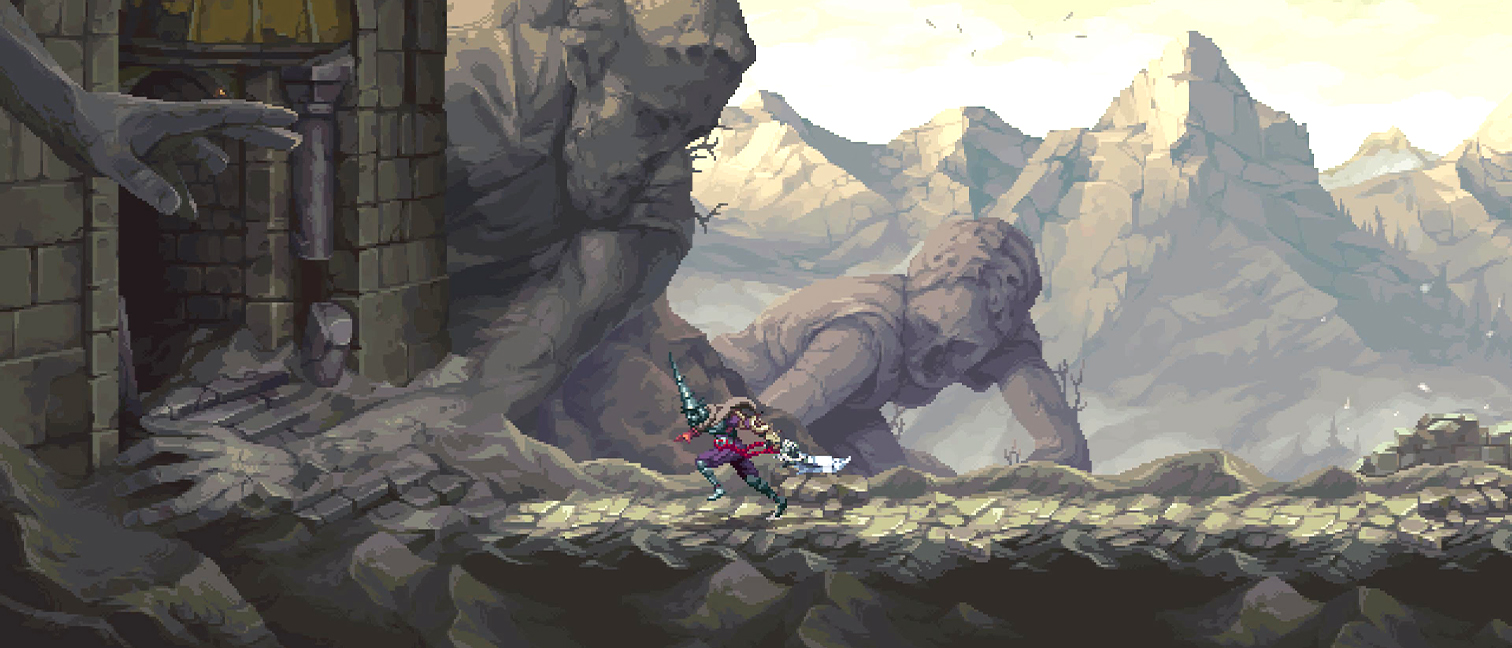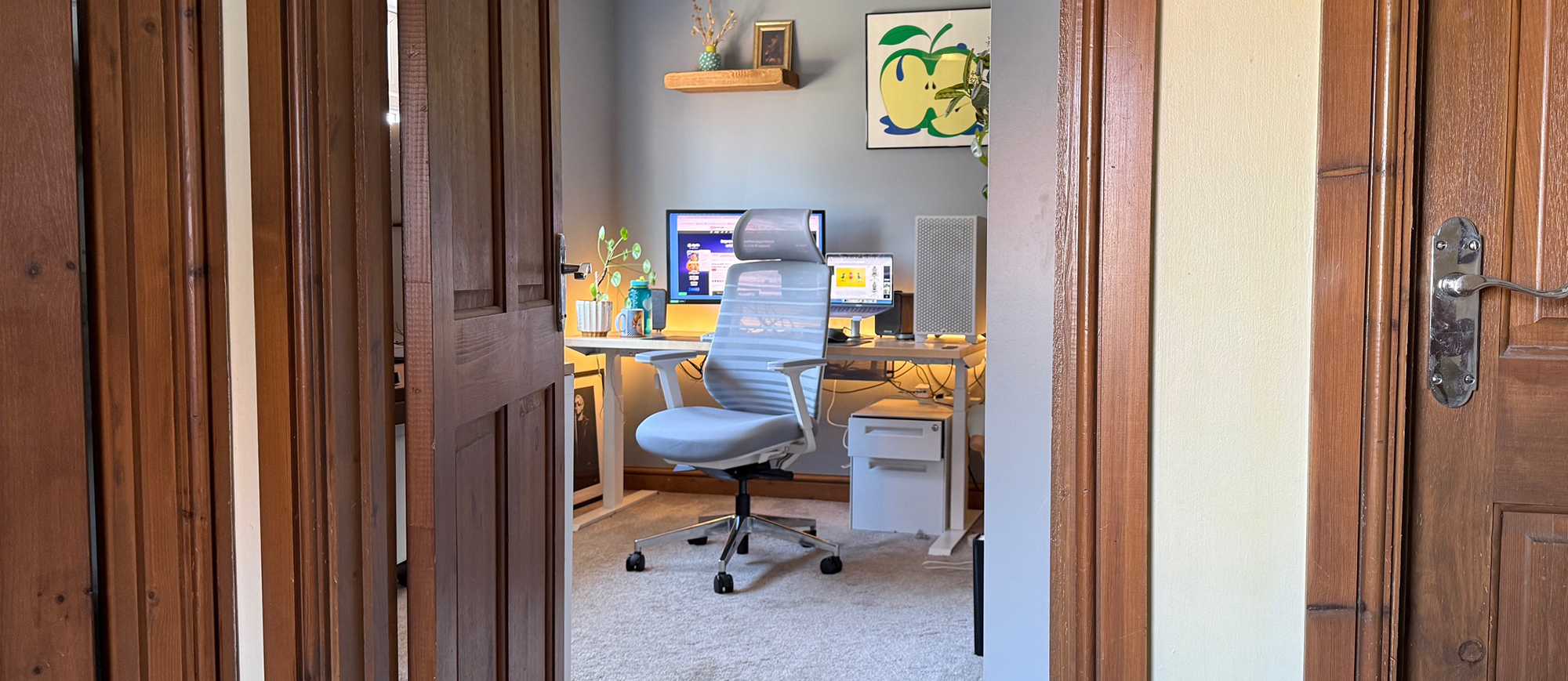Our Verdict
Blasphemous 2 is a visual triumph that manages to load its pixel art with myriad macabre references and surprises. This creative visual design is matched by a refreshed approach to the gameplay that encourages exploration to deliver an approachable take on the Metroidvania meets Soulsborne genre.
For
- Inventive art direction
- Creative world building
- Layered game design
Against
- You don't like freaky art design
Why you can trust Creative Bloq
Blasphemous 2 follows on directly from the well-received original game in every sense. While the story picks up directly after the events of the previous game's DLC, The Wounds of Eventide, it's how developer The Game Kitchen has evolved its art style, a twisted mix of Spanish and mediaeval influences, that really captures the imagination.
There are nods to FromSoftware's Elden Ring in the structure and design of Blasphemous 2's combat, but this is pixel art precision over 3D immersion. While you will need to parry enemies for survival, loot elaborately-named items for upgrades, and retread old areas of the world time and again because, frankly, combat can be brutal, the 2D design enables this developer to stamp its style with authority.
There are some changes to both game design and art direction over the first game; a new multi-weapon setup (which I'll come to later) and a splash of colour and greater detail mean this sequel offers more depth both in what you do and how it looks while you do it.
There are some elements that remain the same; once again the The Penitent One, a figure draped in Catholic imagery from their capirote-like pointed helmet down, with single-minded need to slay any ghoul that rears its head, is on a quest to save the land, now from the creatively-designed Confraternity.
Blasphemous 2 review: wonderful world-building
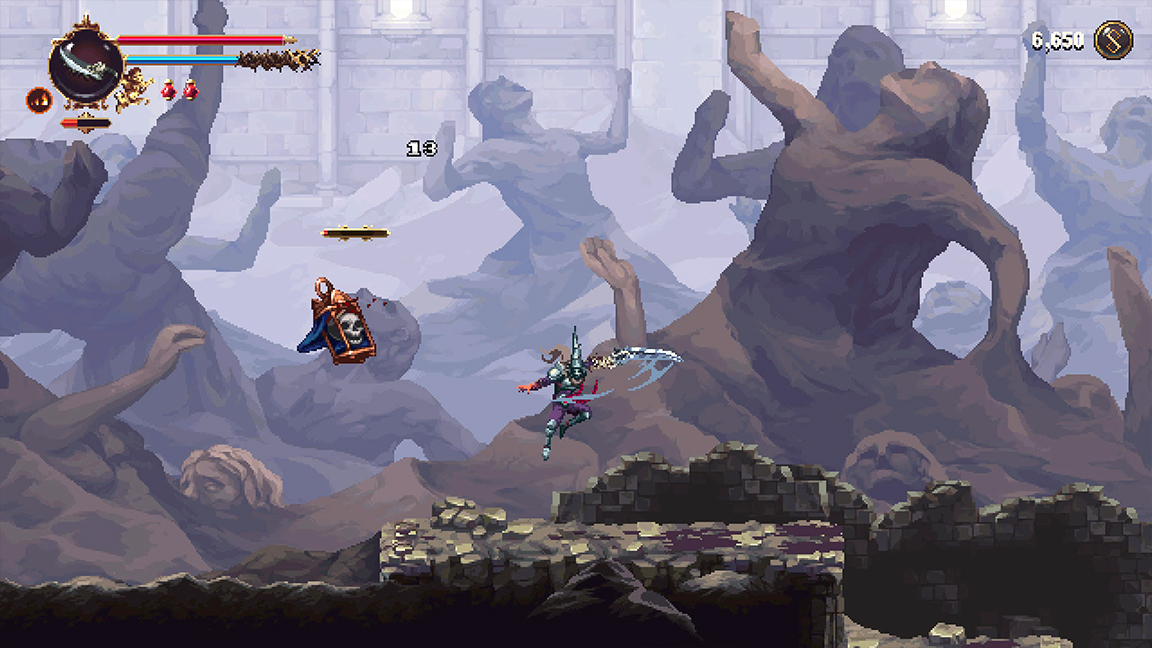
Blasphemous 2 is a work of art. Every screen you discover is layered with subtle detail, references that play on the fantasy and myth of religious iconography as well as simply dripping in atmospheric touches; myst sweeps the screen, multi-pillared scenery sweeps past and ramshackle towns are a clutter of crumbling churches brought to life with a flutter of birds and people… weird people.
The denizens of the land of Cvstodia are as odd as the hideous creatures you'll battle. These are a strange bunch who huddle in ruins and offer gifts to weary travellers. Early on you'll find the City of the Blessed Name, which acts as Blasphemous 2's hub-world, a space to buy upgrades, but typically this is odd.
I meet a carpenter who's happy to help adventurers on quests with whittled alter pieces that he'll place onto the The Penitent One's back, each offers a simple buff - 10% protection from damage and so forth - but with multiple ones attached you can build a custom character just for you; and how you align your alter pieces affects them too, as some get on better with others. See, Blasphemous 2 is a little odd.
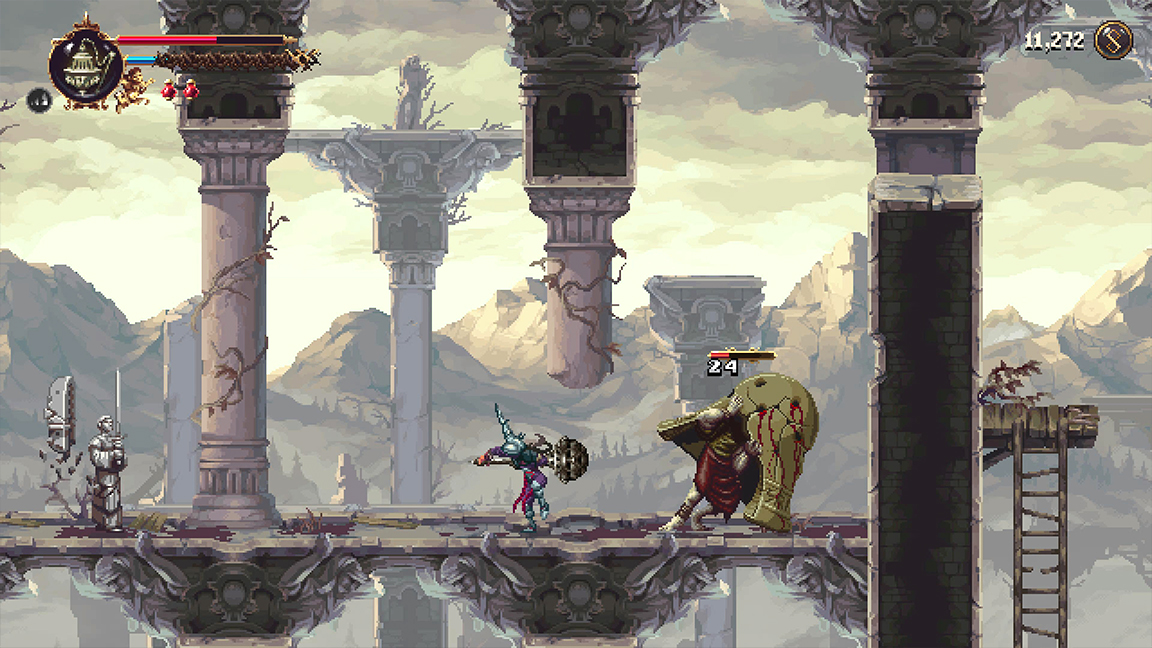
The game is also draped in artistic references; the carpenter has been inspired by real life Renaissance carver Martínez Montañés and the world is note-perfect for Seville's mediaeval architecture that picks up on the Islamic and Catholic influences of the region (where this developer is based).
There's an impact to every screen you discover, and the influence of Francisco Goya's misshapen figures is evident in some of the grander, almost painterly setpieces you will come across - a 10ft tall woman cradling a child as arms and hands claw at her, a pencil thin nun with one eye, a dining table festooned with decaying fruit and meats, who's two aged diners argue and bicker. All of these moments serve a purpose, to build the game's world, explore its lore, and offer new upgrades and secrets to decipher.
The world of Blasphemous 2 is oddly absorbing and you eventually just go with its peculiarities; at one point I stumble onto a giant floating hand being worshipped, and when asked, without hesitation, I let The Penitent One join in. Elsewhere a large baby in an elaborate gold mask asks for rescued cherubs in return for access to a restricted tower - mission accepted. At one point The Penitent One tears off his own hand as an offering to a large angelic figure, I still don't know why I did that. It's all just a little odd but within the world these moments make sense.
Blasphemous 2 review: how does it play?
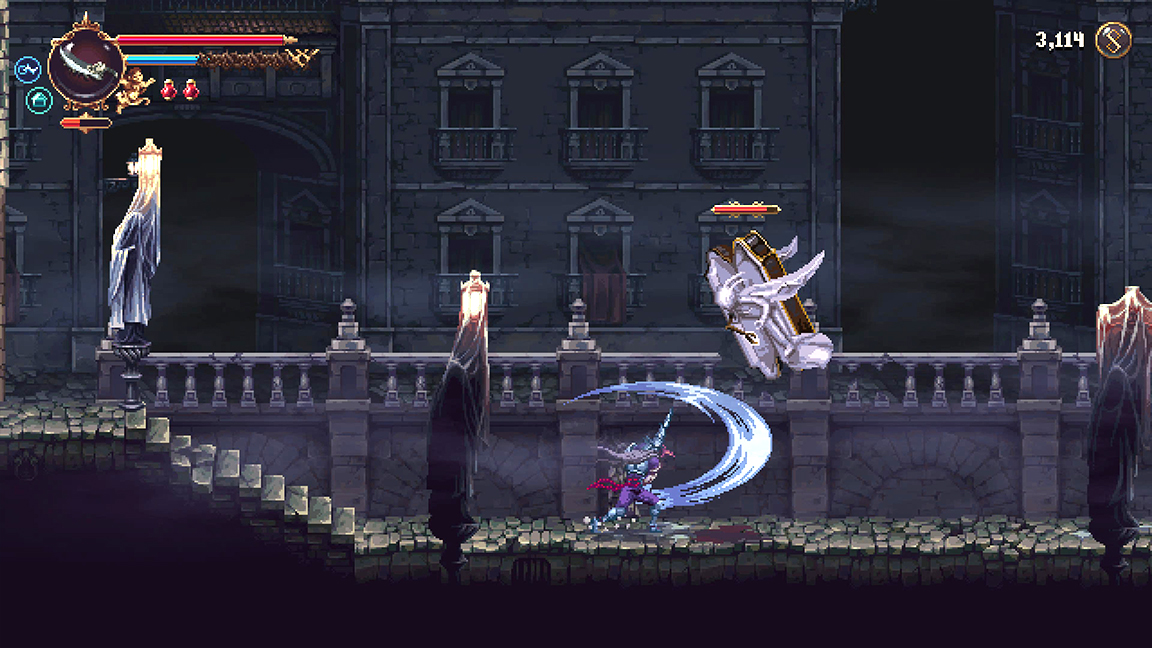
So, Blasphemous 2 is a beautiful game layered with references and artistic detail, but it doesn't matter if the game design can't match the visual ambition. Well, Blasphemous 2 is a step above the original game, and its Metroidvania meets Soulsborne pitch has been finely tuned for the better.
This is a faster and more fluid game that the original, The Penitent One is now spritely and capable of some deft movement and counter attacks. Combat is still solid and weighty but the character is capable of dashes, wall-jumps and a general more athletic approach. Parrying feels a little easier and responsive now, and while there are pinch points where you really need to dodge and counter with perfection, often you can scurry past tricky enemies and return later when you're feeling more empowered.
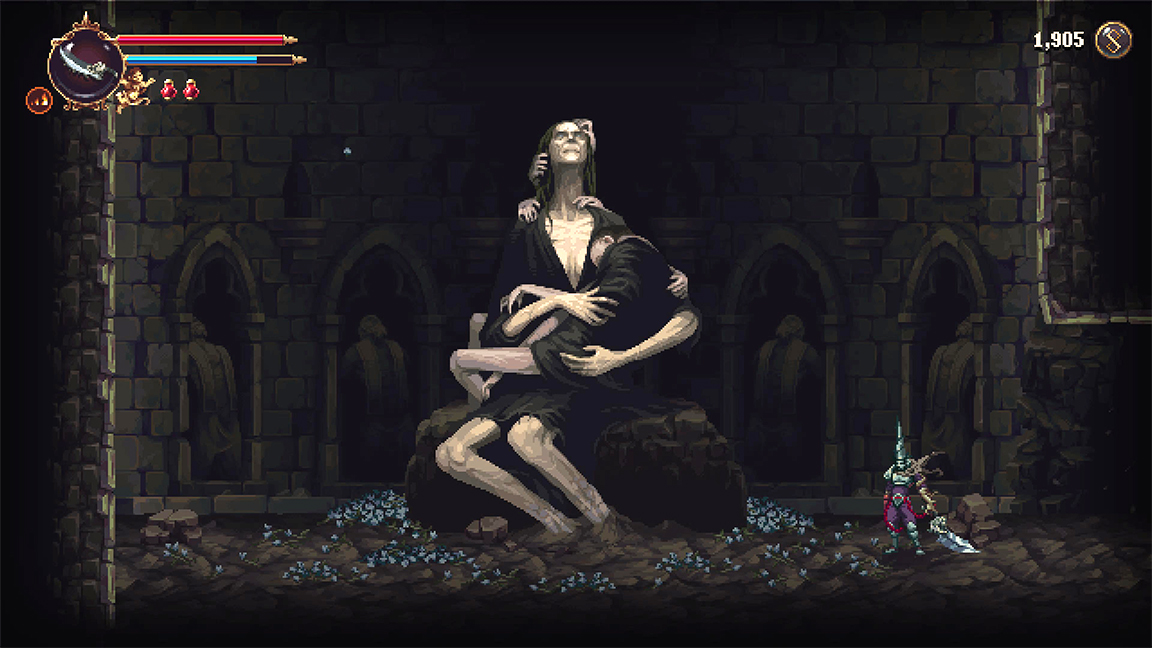
While the die and retry structure of the Soulsborne genre remains, there are liberal restart points and it generally feels more approachable. The Metroidvania game design has been pushed to the fore, ensuring exploration is a greater push than in the previous game.
The foundation for this new focus on discovery is the multi-weapon setup. Eventually you will have access to three weapons - a sword, spiked ball and chain, and a dagger and fencing sword combo - and each affects how you navigate the world. For example, the heavy ball and chain can smash walls and locks (naturally these are gruesome, a cadaver in a glass vile that fills with sand), the fencing sword enables The Penitent One to teleport through mirrors and the sword can break some walls. Eventually you'll need to use them together, hot-swapping to mix each weapon's abilities and access new, secret areas.
You're encouraged to explore too, as hidden areas and strange characters tease upgrades, rewards and new abilities. The eventual goal being to earn that 100% completion, uncover the lore of the land and buff The Penitent One enough to handle the game's grotesque bosses. In short, Blasphemous 2 is an adventuerous joy.
Blasphemous 2 review: a sequel worth the wait
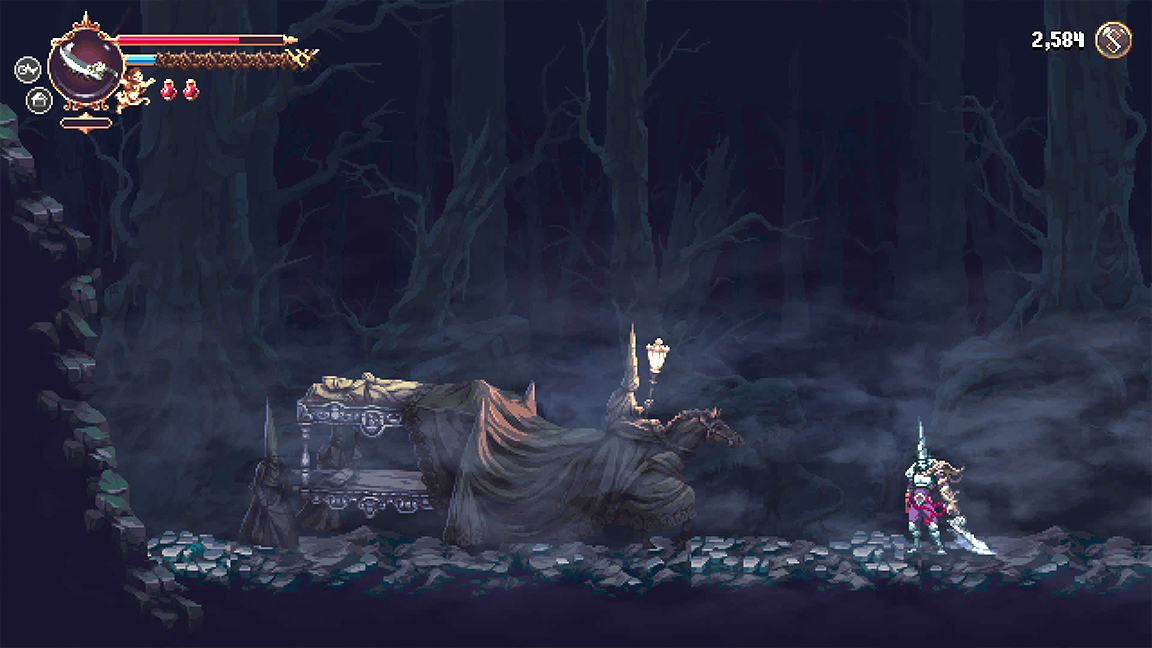
Blasphemous 2 is not just more of the same, developer The Game Kitchen has evolved everything that was good about the original and layered on new ideas that develops the lore and world-building in inspired, but freakish, labyrinthian ways. Combat is refreshed and there's a greater emphasis on exploration and a drive to enjoy discovering the macabre treats in store.
The art direction remains exceptional, and the design is backed by a new level of detail. The slightly scrappy pixel art of the first game is smoothed out, with far more complexity and colour to ensure every weird creature, scene and set-piece shines. Animation is bloody and fluid and every stage is filled with little moments that bring the world to life. It also runs at a smooth 60fps, which always helps.
Blasphemous 2 will be available on all systems, including Nintendo Switch, from 24 August. I reviewed the game on PlayStation 5, but you can find more details at the official website on platforms. After a week of play, Blasphemous 2 remains one of the strangest and most rewarding games I've played this year; my prayers have been answered.

Thank you for reading 5 articles this month* Join now for unlimited access
Enjoy your first month for just £1 / $1 / €1
*Read 5 free articles per month without a subscription

Join now for unlimited access
Try first month for just £1 / $1 / €1
out of 10
Blasphemous 2 is a visual triumph that manages to load its pixel art with myriad macabre references and surprises. This creative visual design is matched by a refreshed approach to the gameplay that encourages exploration to deliver an approachable take on the Metroidvania meets Soulsborne genre.

Ian Dean is Editor, Digital Arts & 3D at Creative Bloq, and the former editor of many leading magazines. These titles included ImagineFX, 3D World and video game titles Play and Official PlayStation Magazine. Ian launched Xbox magazine X360 and edited PlayStation World. For Creative Bloq, Ian combines his experiences to bring the latest news on digital art, VFX and video games and tech, and in his spare time he doodles in Procreate, ArtRage, and Rebelle while finding time to play Xbox and PS5.
